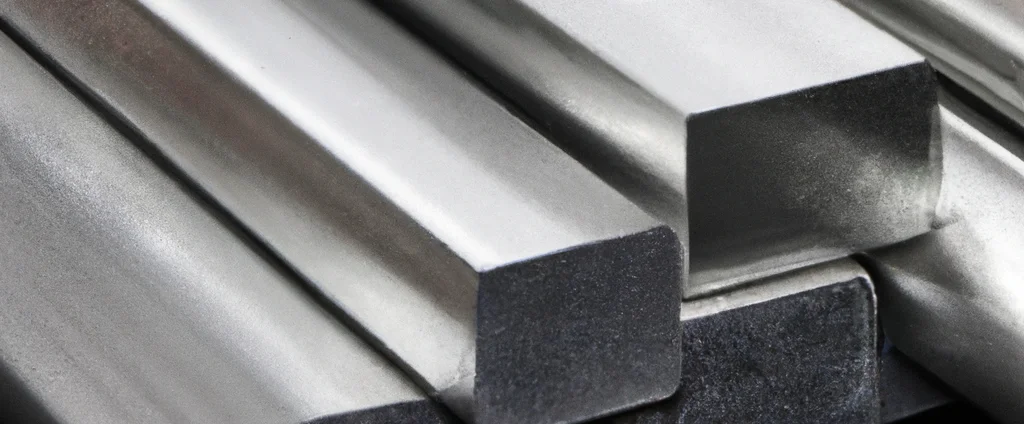Aluminum Alloy 6066 (UNS A96066)

Aluminum 6066 is a medium-strength aluminum alloy that offers excellent corrosion resistance and good weldability. It has good formability and can be easily machined, making it a popular choice for structural and architectural applications.
| Chemical Composition | ||
|---|---|---|
| Element | Min | Max |
| Aluminum | 93% | 97% |
| Chromium | —— | 0.4% |
| Copper | 0.7% | 1.2% |
| Iron | —— | 0.5% |
| Magnesium | 0.8% | 1.4% |
| Manganese | 0.6% | 1.1% |
| Silicon | 0.9% | 1.8% |
| Titanium | —— | 0.2% |
| Zinc | —— | 0.25% |
| Residuals | —— | 0.15% |
The following table provides a list of aluminum 6066 properties in both SI and US customary/Imperial units.
Click on the button to switch between Metric and Imperial units.
| Physical Properties | Metric |
|---|---|
| Density | 2700 kg/m3 |
| Mechanical Properties | Metric |
| Tensile Strength | 150 MPa |
| Yield Strength | 85 MPa |
| Shear Strength | 95 MPa |
| Young’s Modulus (E) | 70 - 80 GPa |
| Shear Modulus (G) | 26 GPa |
| Elongation at Break | 8 - 17% |
| Poisson’s Ratio (ν) | 0.33 |
| Brinell Hardness | 40 HB |
| Thermal Properties | Metric |
| Melting Point | 560 - 640 °C |
| Thermal Conductivity | 150 W/m·K |
| Specific Heat Capacity (Cp) | 890 J/kg·K |
| Coefficient of Thermal Expansion (αL) | 2.3×10-5 1/°C |
| Electrical Properties | Metric |
| Electrical Conductivity | 2.6×107 S/m |
| Electrical Resistivity | 4.5×10-8 Ω·m |
The values in this table are approximate and can vary depending on various factors such as the specific manufacturing process and heat treatment applied to the alloy.
Advantages & Disadvantages of Aluminum 6066
| Advantages | Disadvantages |
|---|---|
| Lightweight | Lower strength compared to some other alloys |
| Excellent corrosion resistance | High cost |
| Good formability | Susceptible to scratches and dents |
| Good weldability |
Applications of Aluminum 6066
Aluminum 6066 is specified for high-performance applications where its combination of lightweight durability, corrosion resistance, and machinability provide critical advantages. Key applications include:
- Aerospace industry: Used for structural components such as aircraft frames, fuselage panels, and wing structures. Its lightweight nature, good strength-to-weight ratio, and corrosion resistance make it suitable for enhancing fuel efficiency and reducing overall aircraft weight.
- Automotive industry: Employed in applications that require lightweight materials, such as vehicle frames, body panels, and engine components. Its weight reduction properties contribute to improved fuel economy, increased payload capacity, and enhanced overall performance.
- Marine industry: Its corrosion resistance makes it well-suited for boat hulls, decks, masts, and other components that are exposed to saltwater or harsh marine environments.
- Structural applications: Finds use in various structural applications where lightweight materials with good strength are required. This includes bridges, building facades, roof structures, and support beams.
- Electrical conductors: Due to its excellent electrical conductivity, it is utilized in electrical conductors, wiring, and bus bars. It efficiently carries electrical current while minimizing energy losses.
- Heat sinks: Its good thermal conductivity makes it suitable for heat sink applications, commonly used to dissipate heat from electronic devices, such as computer processors, LEDs, and power modules.
- Sporting equipment: Utilized in the production of sporting equipment such as bicycles, baseball bats, tennis rackets, and golf clubs. Its lightweight nature and strength properties contribute to improved performance.
